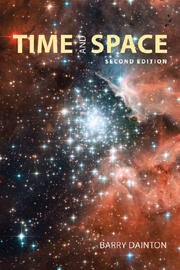Book contents
- Frontmatter
- Contents
- Preface to the second edition
- Preface to the first edition
- 1 Preliminaries
- 2 McTaggart on time's unreality
- 3 The Block universe
- 4 Asymmetries within time
- 5 Tensed time
- 6 Dynamic time
- 7 Time and consciousness
- 8 Time travel
- 9 Conceptions of void
- 10 Space: the classical debate
- 11 Absolute motion
- 12 Motion in spacetime
- 13 Curved space
- 14 Tangible space
- 15 Spatial anti-realism
- 16 Zeno and the continuum I
- 17 Zeno and the continuum II
- 18 Special relativity
- 19 Relativity and reality
- 20 General relativity
- 21 Spacetime metaphysics
- 22 Strings
- Notes
- Glossary
- Web resources
- Bibliography
- Index
4 - Asymmetries within time
- Frontmatter
- Contents
- Preface to the second edition
- Preface to the first edition
- 1 Preliminaries
- 2 McTaggart on time's unreality
- 3 The Block universe
- 4 Asymmetries within time
- 5 Tensed time
- 6 Dynamic time
- 7 Time and consciousness
- 8 Time travel
- 9 Conceptions of void
- 10 Space: the classical debate
- 11 Absolute motion
- 12 Motion in spacetime
- 13 Curved space
- 14 Tangible space
- 15 Spatial anti-realism
- 16 Zeno and the continuum I
- 17 Zeno and the continuum II
- 18 Special relativity
- 19 Relativity and reality
- 20 General relativity
- 21 Spacetime metaphysics
- 22 Strings
- Notes
- Glossary
- Web resources
- Bibliography
- Index
Summary
The direction of time
A French nursery rhyme runs “L'eau est comme le temps: il coule, il coule, il coule.” If time really did flow, then, like a flowing river, it would also have a direction. But if the B-theory is true, time is not going anywhere: there is no moving “now”, no slippage into the past, no crystallization from mere possibility into present actuality. Every time and every event is equally real. But why does time seem to have a direction if it doesn't? The B-theorist's explanation will take this general form: time does not flow or pass, but there are nonetheless asymmetries to be found among the contents of time, the material and mental processes we know to exist, and it is these asymmetries that we mistake for temporal flow and that provide time with its apparent direction (cf. the passage from Williams in §3.8).
Whether or not these content-asymmetries suffice to give time itself a direction depends on how we view time. If the substantivalist is correct, and time is an entity in its own right over and above any contents it might have, then there is a sense in which time might be perfectly symmetrical in itself, and so lack any “directedness”, even if its contents do not. By way of an analogy, imagine looking at a glass cylinder that gradual ly changes in colour from blue to red; you assume that the glass itself has an in-built colour asymmetry, but you are wrong: the glass is perfectly clear throughout (and so entirely symmetrical), but embedded within, a short way beneath the surface, is an asymmetrically coloured sheet of paper.
- Type
- Chapter
- Information
- Time and Space , pp. 44 - 62Publisher: Acumen PublishingPrint publication year: 2010



